Disclosure: This post contains references to products or services from one or more of our advertisers. We may receive compensation when you buy one of these products or services. For an explanation of our Advertising Policy, visit this page.
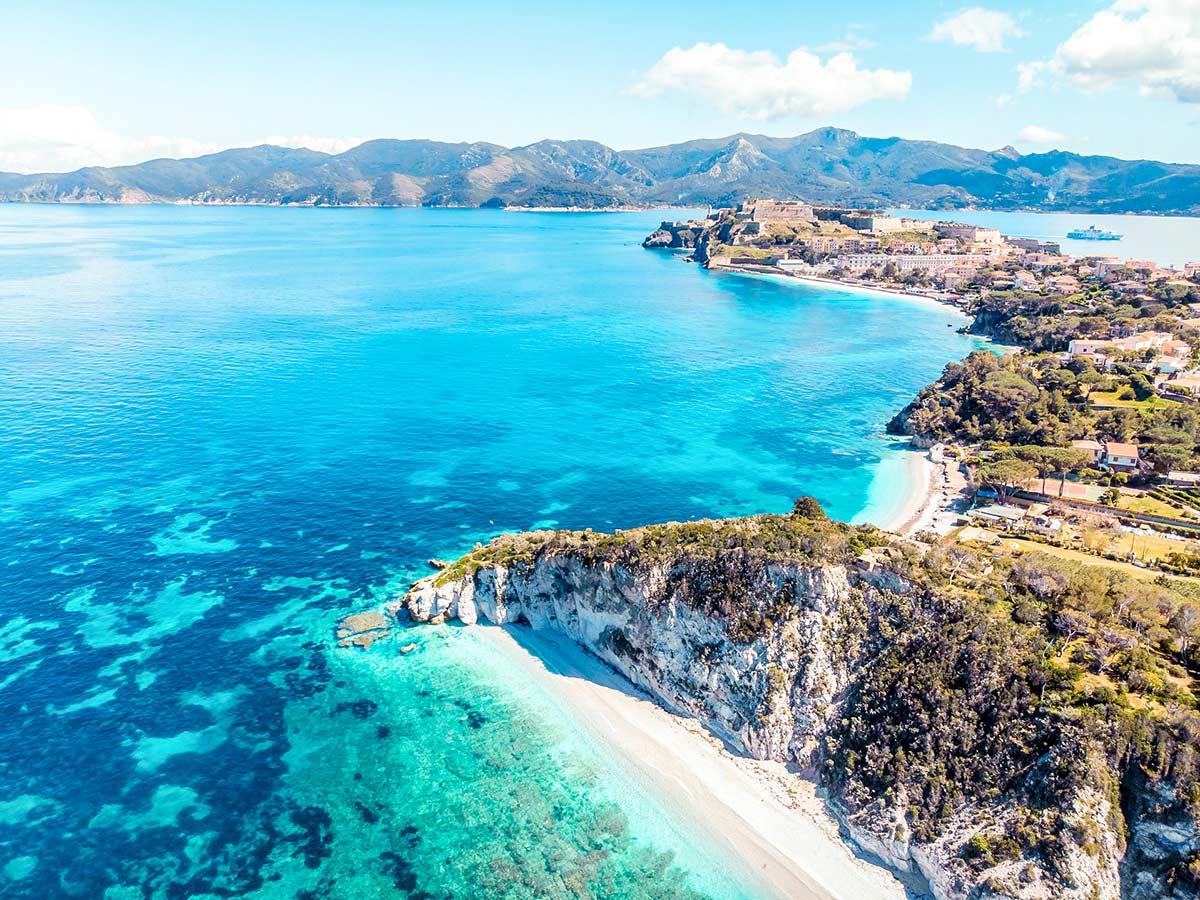
About Tuscany
Tuscany is a region in central Italy along the western coast and extending inland. It is known as the birthplace of the Renaissance, and as such it is a place full of history, art, music, architecture, and rich culture. It is also known for its spectacular landscapes, delicious cuisine, and magnificent wineries. Tuscany truly offers something for everyone, from outdoor adventures to culinary experiences to museums and cultural experiences. No trip to Tuscany is complete without a sampling of all these things.
Tuscany is also a very diverse region. While most people picture the green rolling hills of the famous Tuscan countryside, the northern part of Tuscany is mountainous and features the rugged beauty of the Apuan Alps. The Etruscan coastal region boasts another kind of natural beauty and lovely beaches. There is even a desert-like area known as the Accona Desert. In fact, Tuscany offers such a wealth and diversity of experiences that planning a trip to this remarkable area can be overwhelming. Fear not! We’re here to help!
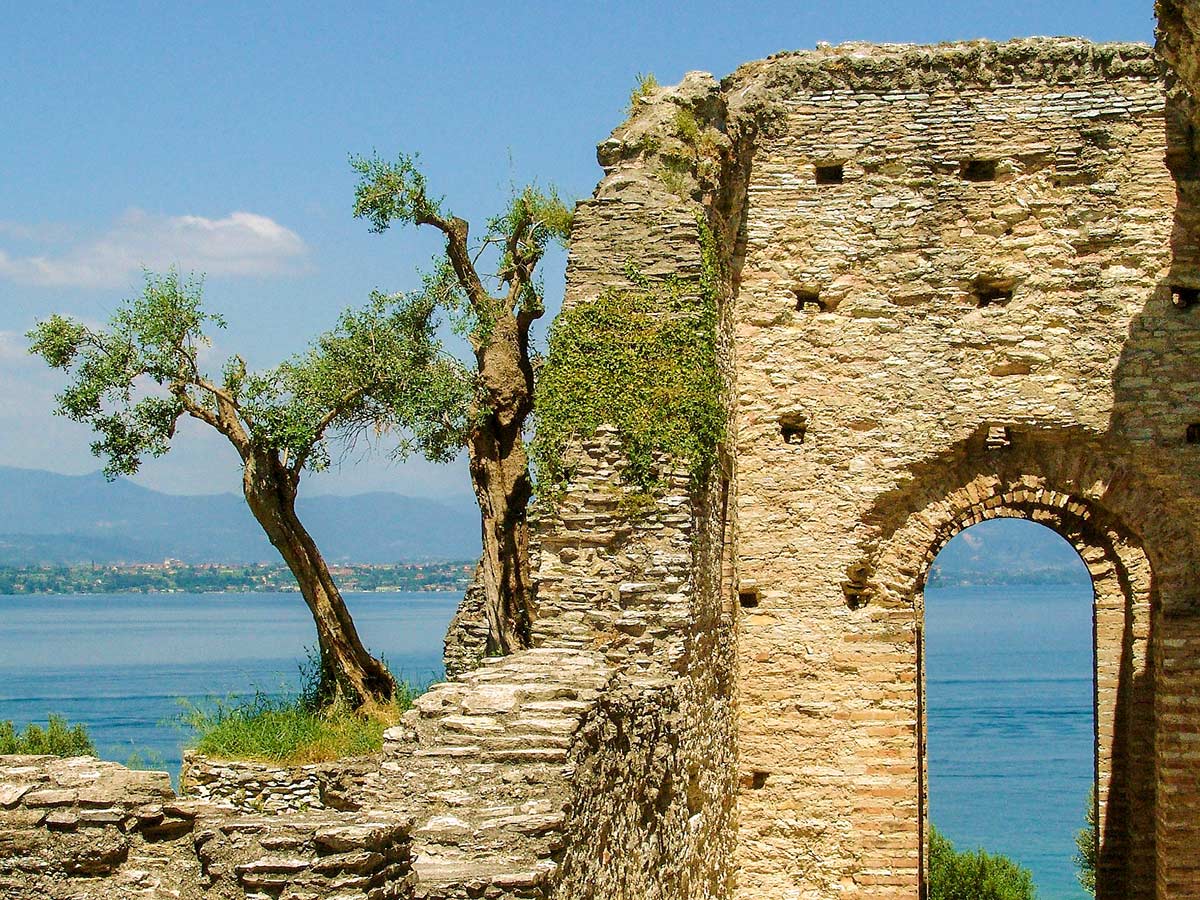
How to get to Tuscany
Tuscany is a popular tourist destination so getting there is relatively easy. Italy has good infrastructure and you’ll find trains, buses, and taxis that can get you where you want to go. There are several major airports and driving is generally not complicated.
Flying to Tuscany
There are two airports in Tuscany: Amerigo Vespucci Airport in Florence (FLR) and Galileo Galilei International Airport in Pisa (PSA). These two airports are only about 80 km apart, and Pisa is the larger of the two. Both airports offer regular flights to major European cities, and North American visitors will likely need to connect through one of these cities.
Larger international airports within a reasonable driving distance are located in Milan, Bologna, and Rome. The best airport for you will depend on where you are planning to spend your time in Tuscany, where you are flying from, you budget, and how flexible you are regarding schedules. If you will be visiting several areas in Tuscany, arriving and departing from different airports might make the most sense for you. Buses, trains, and car rentals are available from all of these recommended airports.
Approximate distances and drive-times from these airports to great locations for your Tuscan adventure:

Driving to Tuscany
Driving to Tuscany from other parts of Europe is easy. There are several European highways (E35, E76, and E80) that run through Tuscany, as well as other good roads that will give you great views as you travel.
Use the airport driving chart above to estimate driving times from major Italian cities such as Rome, Milan, and Bologna.
Best time to visit Tuscany
The best time to visit Tuscany is in the spring or fall. The months of April, May, June, September, and October offer the best weather, and therefore they are also considered peak tourist season in the region. June offers several local festivals that may be fun to experience. The summer months of July and August can be very hot so if you’re traveling during this time, it may be worth spending a little extra for an air-conditioned hotel. In the winter, Tuscany can be cold and rainy and there is often snow in the mountains. Many attractions will be closed or operating on restricted hours during the off-season.
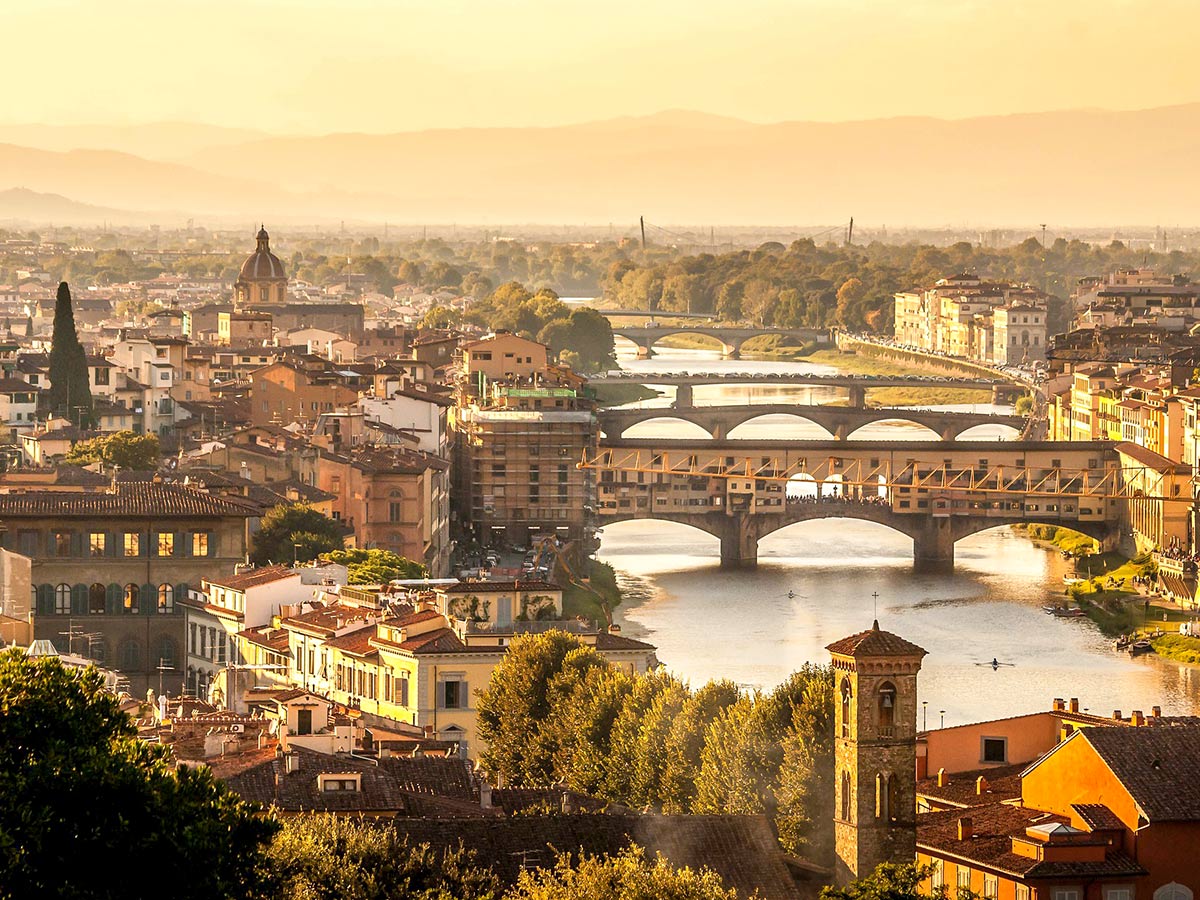
How to get around Tuscany
Driving yourself is the most flexible way to get around Tuscany, enabling you to get off the highways, explore smaller roads, and stop whenever something catches your eye. Exploring by bicycle allows you to discover this beautiful region in a more intimate way, though it naturally limits your distance range more than driving. Cyclists will find many small roads perfect for riding, and it is possible to get around while avoiding highly-trafficked roads.
Buses and trains are available throughout the region, typically with Florence as a hub. Choose a regular train or pay a supplement and ride on a high-speed train. The Frecciarossa (ES) high-speed train that connects Salerno, Naples, Rome, Milan, and Turin also stops in Florence. This is the fastest, most comfortable, and most expensive option for covering longer distances.
Elba Island Transportation
Elba Island is 9 km off the coast of Tuscany. Ferries from the mainland leave from Piombino and take 30-60 minutes to arrive in one of three ports on Elba: Cavo, Rio Marino, or Portoferraio. Ferries leave frequently during the peak season, but only run a few times per day during the off-peak season. Booking a ferry in advance is recommended, especially in the peak season. You can take a car across on the ferry, rent a car on the island, or use Elba Island’s bus system to get around the island once you arrive.

Where to stay in Tuscany
Because Tuscany is such a popular tourist destination, there is no shortage of great places to stay. Once you have decided which area(s) you plan to visit, set your budget and use a consolidator such as booking.com or hotels.com to explore the available options. Many travelers prefer hotels, but you may also want to consider guesthouses, hostels, or even house and apartment rentals.
Be sure to pay attention to parking availability if you will have a car. Many hotels that are centrally located will not offer visitor parking so you will need to explore what options are available for parking in the area.
From world-renowned cities such as Florence and Siena to smaller gems that you’ll never forget, there are some great places to stay in Tuscany.
Where to Stay in Northern Tuscany
Northern Tuscany is home to the Apuan Alps and the incomparable city of Florence. Spend some time in Florence, but don’t miss the chance to visit smaller mountain towns as well.
Florence
Florence is the capital of Tuscany and a center of Renaissance architecture and art. Take in masterpieces by da Vinci and Boticelli, gaze upon Michaelangelo’s “David”, and watch the sunset behind the iconic Duomo cathedral. Consider staying at the Hotel Il Guelfo Bianco, which is a hotel situated in the centre of Florence, located in a building dating back to the 15th century.
Lucca
Lucca is a great base for exploring the mountains on one day and the coast on the next. It is also a short drive from here to visit the famous Leaning Tower of Pisa. Don’t spend your whole stay commuting elsewhere, though. This walled medieval city has a lot to offer and is well worth exploring. Consider staying at B&B Antico Cancello, which is situated right in the heart of Lucca.
Montecatini Terme
Thanks to its naturally flowing thermal waters, Montecatini Terme is one of the biggest “spa towns” in Italy. It offers rich history and architecture, including elaborate fountains. Ride the funicular railway to the nearby medieval mountain village of Montecatini Alto. This is also a great base for exploring the Apuan Alps.
Carrara
Surrounded by the mountain peaks of Apuan Alps Park (Parco delle Alpi Apuan), Carrara is the gateway to the Apuan Alps region. Stay here as a base for exploring the mountains but don’t miss the Castello Malaspina citadel in this fantastic city
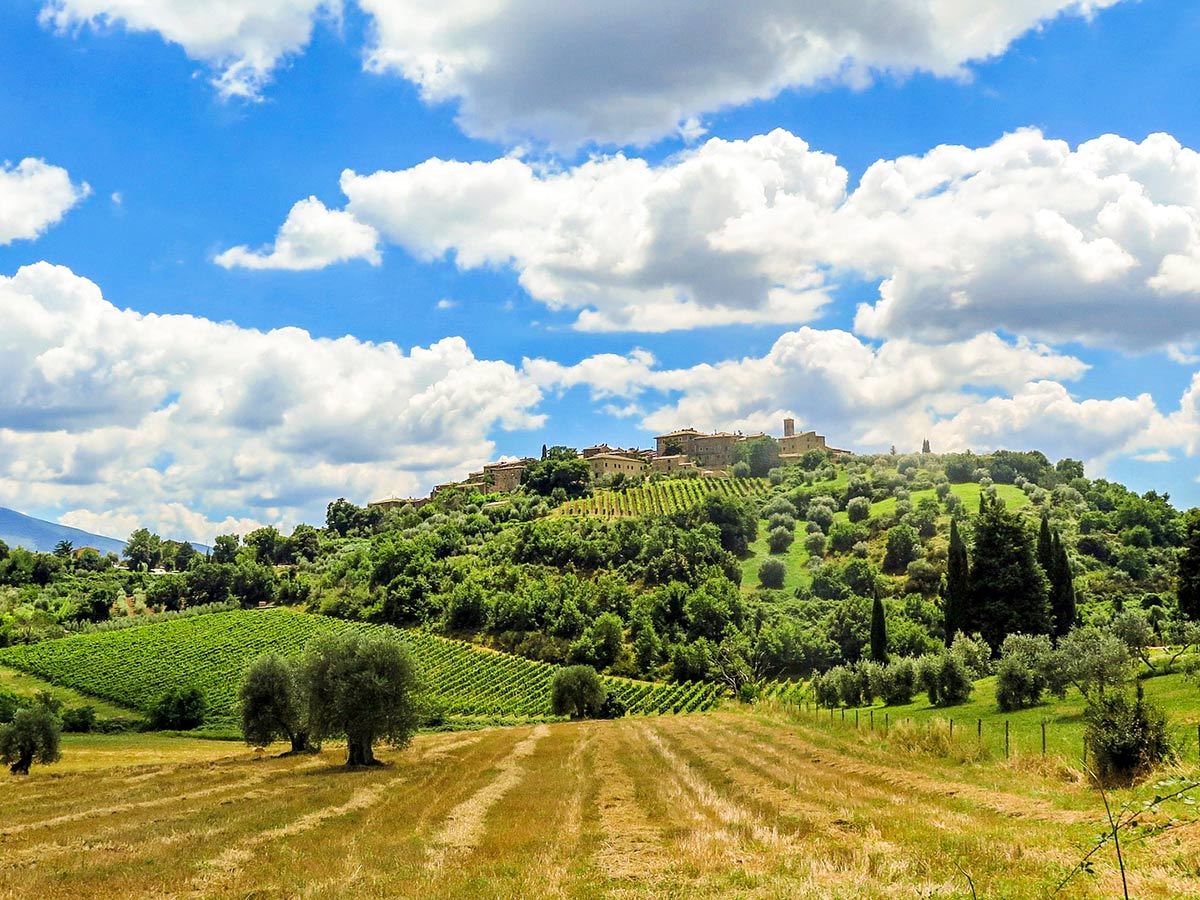
Where to Stay in Central Tuscany
Siena is a beautiful and historic city that has been declared a UNESCO World Heritage site. It’s also known for the distinctive color of the soil, which has been used to make the bricks that distinguish its medieval architecture. Stay here and allow time to walk the streets and explore at a leisurely pace.
The walled medieval town of San Gimignano, nestled in the rolling Tuscan hills, is known as the “City of Towers.” It draws busloads of tourists every day, but when you choose to stay here, you can have the peaceful streets nearly to yourself to explore in the evenings when those buses pull out.
Another fortified town of medieval towers is Monteriggioni. It is noteworthy for its perfectly circular perimeter and because it was mentioned by Dante Alighieri in The Divine Comedy. It is convenient for outdoor adventures, located on the famous Via Franicigena pilgrimage trail and bordering the Castelvecchio nature reserve.
Where to Stay in Southern Tuscany
Montepulciano exemplifies the image you picture when you think of Tuscany: rolling hills, charming medieval villages, vineyards and local wines. Explore this ancient town, perched on a hilltop for exquisite views of the surrounding countryside. Base from here to explore this spectacular region.
Stay in the quaint, picturesque port town of Piombino and explore the beautiful nature of the Etruscan coast. Enjoy the area, relax on a nearby beach, and catch the ferry from here out to Elba Island for even more adventures.
Where to Stay on Elba Island
Portoferraio is one of three port cities on Elba Island, and its central location makes it the perfect location for Elba explorations. There is hiking nearby and plenty of history, especially connected with Napoleon, since he was exiled here in 1814. Plan for crowds in peak season and reserve your ferry tickets and accommodations well in advance.
The closest ferry port to the mainland, Rio Marina is the fastest and cheapest destination on Elba Island. This small port town is surrounded by natural beaches and parks and can be a great escape from the crowds of tourists in Portoferraio.

Where to Eat in Tuscany
In a region as large as Tuscany that is known for its incredible cuisine, it’s easy to find an amazing meal almost anywhere you go, and equally difficult to recommend just a few restaurants. In this region, the food and wine are as much a part of the experience as the landscape, art, or architecture are, so take your time. Linger around the table, soak in the ambience, and learn to eat like a local.
As you’re enjoying the fantastic nature, why not pack a picnic so that when you find that breathtaking view you can spread a blanket and create a feast for all your senses. As you walk through town you can buy a loaf of fresh-baked bread at the panetteria, and pick up some pecorino, a popular hard cheese made from sheep’s milk. Meat can be found at the macelleria and you can always find amazing produce at the local markets. Don’t forget to top it off with a bottle of locally produced wine.
Traditional Tuscan Dishes
While you’re sure to find incredible fresh pasta with richy creamy sauces anywhere in Italy, take the opportunity to sample a few Tuscan specialty dishes, such as:
Lampredotto – the fourth stomach of a cow, cooked in broth and typically served with sauce, thinly sliced on a sandwich.
Crostini Toscani – frusta bread (similar to a baguette) topped with chopped chicken liver sauce.
Panzanella – a cold bread salad made with bread, tomatoes, onions, basil, and olive oil.
Pappa al Pomodoro Soup – soup made from stale Tuscan bread, tomatoes, garlic, and basil.
Castagnaccio – a traditional cake from the mountain regions of Tuscany that can be served either hot or cold. It is made with chestnut flour and topped with seeds and nuts.
Along the Etruscan coast and on the island of Elba, don’t miss the incredible fresh seafood dishes!
Visiting Wineries in Tuscany
Visiting a winery in Tuscany is more than a meal or a wine-tasting event. It is an immersion experience in the ancient culture of these ancient hills. Many wineries offer tours and demonstrations that give you a glimpse of the process, from vine to bottle. Here you can learn about wine from the people who know it best, discovering the diversity of nuanced flavors and aromas.
The four major wine regions: Chianti Classico, Carmignano, Rufina, and Valdarno di Sopra, were officially established in 1716. Chianti Classico is the most famous of these territories, producing three different types of Chianti wines. A sweet dessert wine called Aleatico is produced on Elba Island. Learn everything you need to know to make the most of your visit to the Tuscan wine country before you go so you can choose how to select the options that most appeal to you.
Remember that you can take wine home with you! When you have discovered your favorite local wines, you can purchase extra to enjoy at home while reminiscing about your dreamy travels in Tuscany. Be aware that airlines have restrictions on how much you can bring with you, and your home country will also have limits on how much you can bring in duty-free. You can also get the wine you purchase shipped to your home address for a fee. The shipping may seem expensive, but it will likely still be cheaper than purchasing the same wine in your local wine shop, if that variety is even available for purchase where you live.
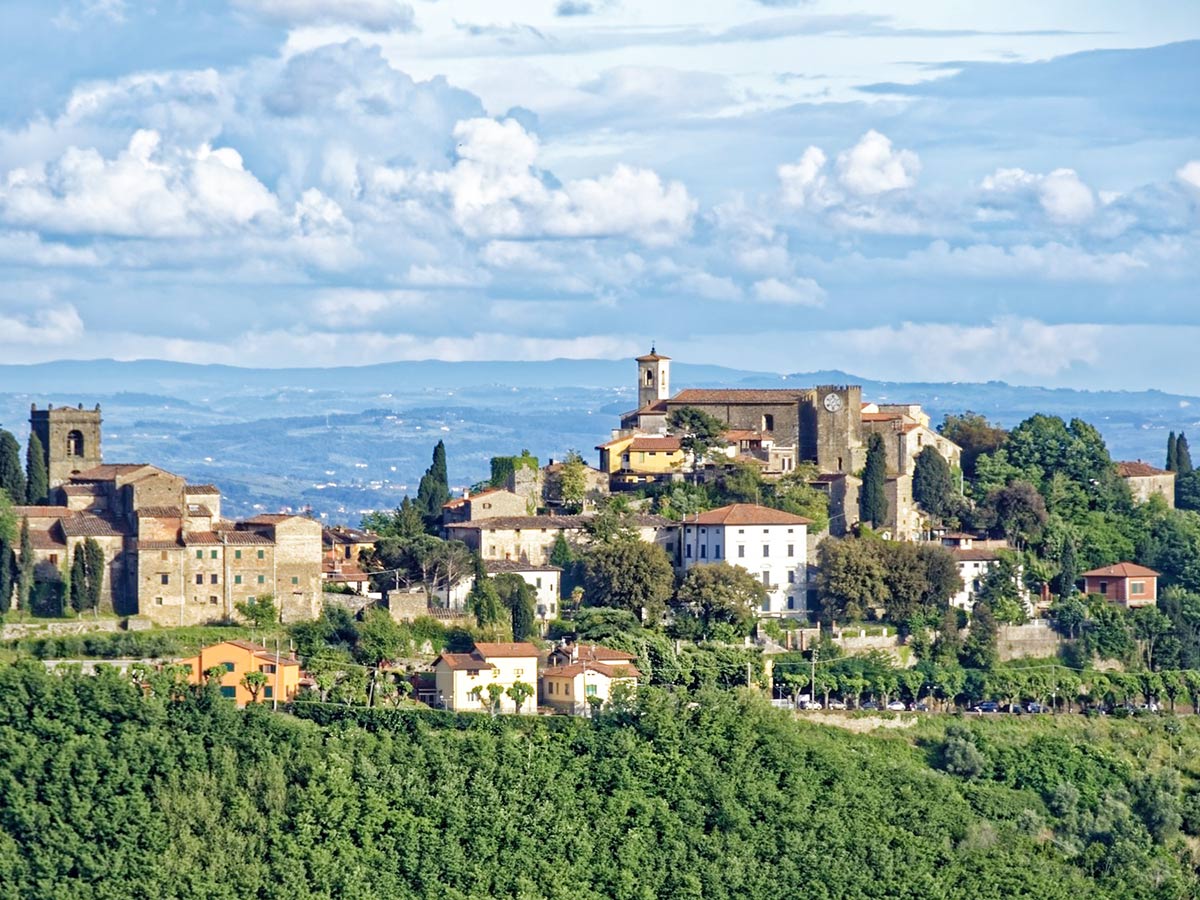
Things to do in Tuscany
There is so much to do in Tuscany that you could never do it all in one trip. Regardless of how much time you are able to spend exploring, you will still need to prioritize and choose between a myriad of spectacular options. Save the rest for a future trip, because once this amazing place has gotten under your skin, you’ll be longing to return.
Hiking in Tuscany
From the mountainous north, to the rolling hills of the central and southern regions, to the dramatic coastline and the impressive Elba Island, there are abundant choices for hiking trails in Tuscany. No matter how much time you have or your ability level, you are sure to find a hike that is perfect for you. Discovering Tuscany on foot is well worth the effort.
The ancient Via Francigena pilgrimage route is a popular long-distance trail that stretches from the French border through Tuscany to its endpoint in Rome. You can walk a segment of it, for example the beautiful 20-kilometer stretch from Monteriggioni to Siena.
On Elba Island, take a couple of hours to walk around the Enfola Peninsula loop, taking in spectacular views along the way. While staying in Florence, hike a portion of the Via degli Dei from Fiesole to Firenze. When you’re up in the mountains near Lucca or Carrara, don’t miss the hike up to the summit of Monte Croce.
Biking in Tuscany
Cycling is another wonderful way to experience the cities, towns, and countryside of Tuscany. While you can always grab a bike and a map and explore along bike paths and country roads, you can also follow a number of more established routes and itineraries.
The Via Pisana is a walking or cycling path that leads from Florence to Siena. By bike the whole route takes about 4 days, but you could also choose to ride shorter stages for one day or even just for a few hours.
In southern Tuscany, the ride around the picturesque Laguna di Levante on a 25 km loop that takes about 6 hours and begins and ends in Orbetello. On Elba Island, try the 17 km loop that takes you to the top of Monte Perone for amazing coastal views.

Driving tours in Tuscany
Ditch the highly-trafficked highways and motorways and take some classic driving routes from one wonderful town to another. No matter where you start and where you are headed, you can find the perfect scenic route to get you there. Ask at your hotel or find a local for tips on road that will take you off the beaten path to discover the authentic Tuscany.
Follow the renowned Chiantigiana Road (SR222) for a scenic tour of Chianti along the way between Florence and Siena. Stop along the way in five different small towns for a classic experience of the Chianti region. Or follow the spectacular Etruscan coast and discover the history and culture of the towns between Piombino and Pisa, including stops at several archaeological sites and museums.
Other Can’t-Miss Activities in Tuscany
- Take a vineyard tour or a “grape tour,” such as a guided Super Chianti tour. This includes tours and tastings of two different vineyards and wine cellars, olive oil and cheese tastings, and a tour of the Chianti village of Greve. Lasts up to 8 hours, group size limited from 2-8 people. Book in advance.
- Take a walking tour of Old Town in Siena and then refresh yourself with some gelato in the Piazza del Campo, one of the most fantastic medieval squares in Europe.
- Tour the Carrara marble basins in a 4×4 off-road adventure where pristine white blocks of marble are actively mined. You might recognize some of the incredible scenery from the film James Bond: Quantum of Solace.
- Watch the famous Eroica cycling race in Gaiole in Chianti, held annually in October. The race itself is only part of the fun. Each year, on the first Sunday of October, the town of Gaiole is flooded with music, theatre, art, markets, and more. It’s a spontaneous, anything-goes atmosphere – plus a classic bike race.
- Visit Michaelangelo’s famous “David” sculpture in Florence. The original is housed in the Galleria dell’Accademia and a copy can be found in Duomo Square opposite the Palazzo Vecchio. Booking a ticket to the gallery in advance is recommended due to the popularity of this attraction.

Dangers in Tuscany
Tuscany is generally a very safe part of the world to visit. The crime rates are low, though tourists should always be aware of pickpockets and thieves in crowded areas and near tourist attractions.
The tap water is safe to drink and quality medical care is available if needed. A few species of poisonous snakes, spiders, and scorpions can be found in Tuscany but the risk of encountering them is low. Bears are not known to live in Tuscany. There are wolves, but seeing them is rare as they prefer to avoid humans.
Five Interesting Facts about Tuscany
- Tuscany has more UNESCO World Heritage sites than the countries of South Africa and Australia.
- The modern Italian language originated in Tuscany, based on the historic Tuscan dialect.
- The story of Pinocchio comes from Tuscany, penned by Carlo Collodi in the 1880s.
- Florence was the first city in Europe to pave its streets, paid for by bankers and merchants in 1339.
- There is a desert in Tuscany. The Accona Desert is far from the typical image of Tuscany’s rolling green hills, but the Accona is a true desert, formed of sand and dome-shaped formations.
- Tuscany is often named one of the most romantic destinations in Europe.

Frequently Asked Questions about Traveling in Tuscany
Do they speak English in Tuscany?
Yes. Because Tuscany is so popular with tourists from around the world, most people can understand and speak English enough to communicate. Major tourist attractions, hotels, airports, and other transportation centers will typically have signs available in both Italian and English.
What is Tuscany famous for?
Tuscany is known as the birthplace of the Renaissance, so it is famous for history, art, culture, architecture, and music. It is also known for its beautiful and varied landscapes as well as incredible food. Tuscany is also home to wineries that produce some of the world’s best-known and appreciated wines. Tuscany truly has it all!
How many days do you need in Tuscany?
There is too much to see and do in Tuscany to ever fit it all into one trip. If you only have a week, you can see many of the most famous highlights, but you won’t regret staying longer if you have the opportunity.
How much is a trip to Tuscany?
Excluding airfare, most tourists spend an average of €100-150 EUR per day on their trips in Tuscany. Since this number includes meals and lodging, you can adjust this amount by choosing different hotel and restaurant standards. Flights from North America range between $500-1,000 USD per person and flights from London average between £50-150 GBP.


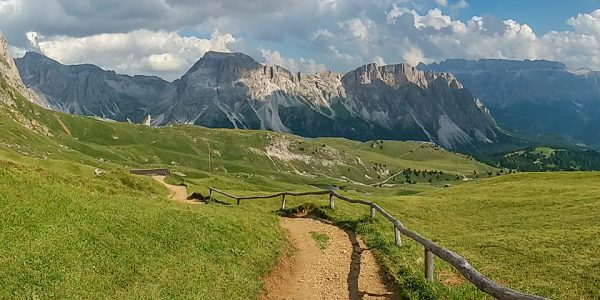
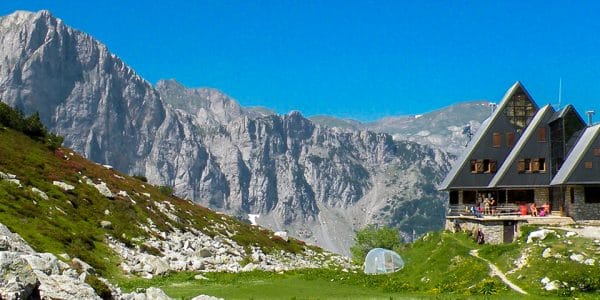
Comments
ntagg3 years ago
Thank you for this wonderful article. I have been travelling to Italy for over 40 years and very much look forward to my next visit this July. Although I have been to many of the places you mentioned in the article, it allowed me to dream a little and get excited for travel to reopen. I was supposed to return to Montepulciano this past summer, but my vacation was cancelled due to covid. Montepulciano is one of my most favorite places in Tuscany and I have visited many times. For your readers, I would suggest if they visit Montepulciano, to stay at Fonte Martino (www.fontemartino.com), which is a wonderful bed and breakfast just outside of town. I also adore the restaurants L’Altro Cantuccio and Porta di Bacco, both of which have amazing dining.
Reply